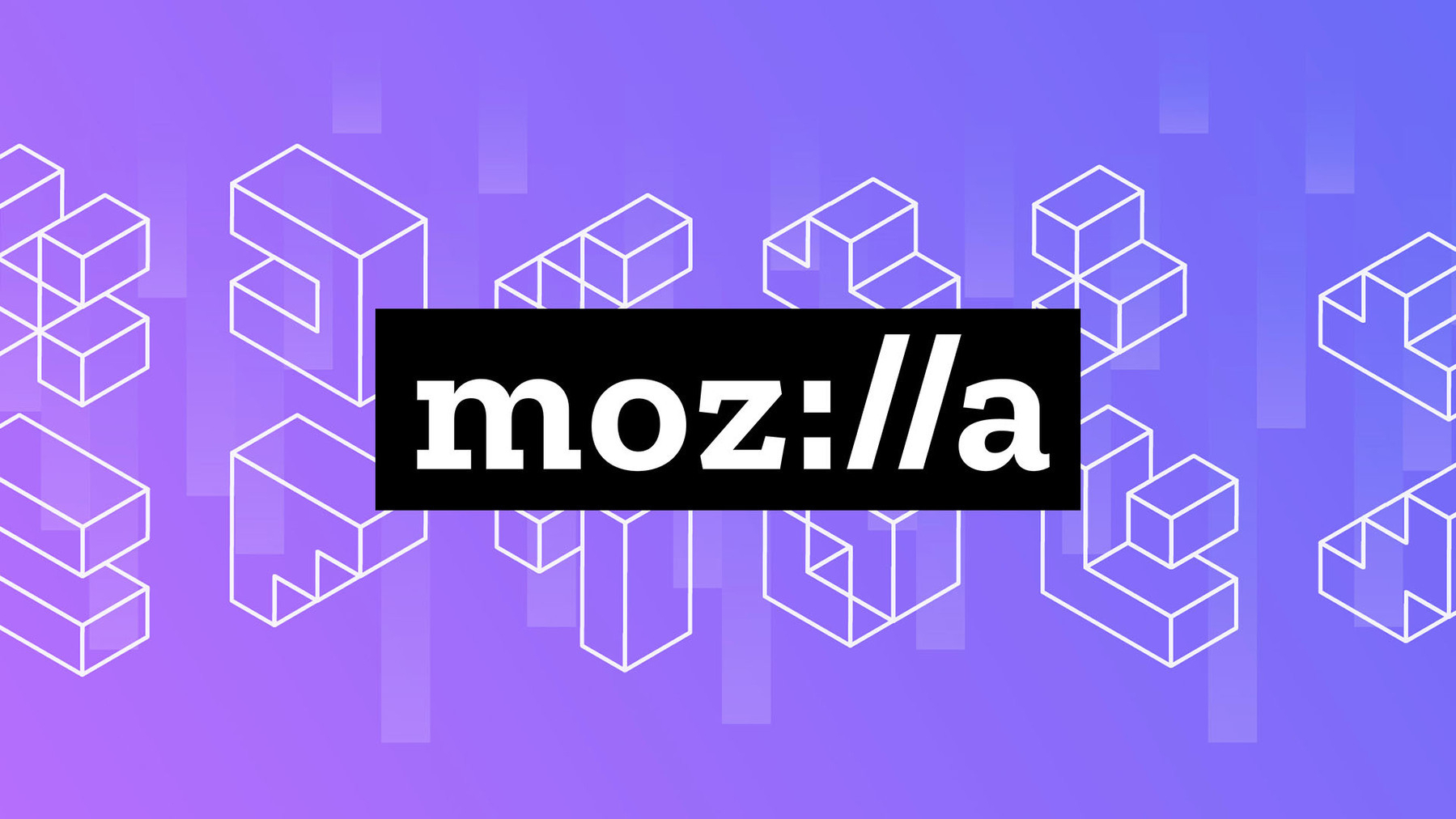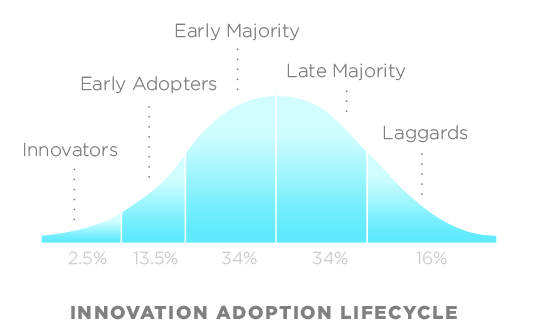- Awesome Screenshot
- ColorZilla
- Containers Sync
- Dark Reader
- Decentraleyes
- Disconnect
- DownloadThemAll!
- Firefox Multi-Account Containers
- Floccus
- Fraidycat
- LessPass
- Livemarks
- Momentum
- NoPlugin
- Plasma integration
- Privacy Badger
- RSSPreview
- Terms of Service; Didn't Read
- The Camelizer
- uBlock Origin
- Video DownloadHelper
- Web Developer
- Zoom Scheduler
- MIT Starts University Group to Build New Digital Credential System (EdSurge) — "The group... expects the standard to be “completely complementary” to the Open Badges standard that has been in the works for many years."
- European MOOC Consortium launches Common Micro-credential Framework (Education Technology) — "A leading driver for the development of the framework is the demand from learners to develop new knowledge, skills and competencies from shorter, recognised and quality-assured courses."
- Why a New Kind of ‘Badge’ Stands Out From the Crowd (The Chronicle of Higher Education) — "As we’ve been reporting, the buzz around certificates, badges, and other measures of achievement has been on the rise as employers have increasingly questioned whether a college degree is a reliable or adequate “signal” of an applicant’s capabilities."
- Do Experts Listen to Other Experts? (Marginal Revolution) —"very little is known about how experts influence each others’ opinions, and how that influence affects final evaluations."
- Why Symbols Aren’t Forever (Sapiens) — "The shifting status of cultural symbols reveals a lot about who we are and what we value."
- Balanced Anarchy or Open Society? (Kottke.org) — "Personal computing and the internet changed (and continues to change) the balance of power in the world so much and with such speed that we still can’t comprehend it."
- Ape using a Smartphone (YouTube) — staring and scrolling is a primal urge, it would appear!
- Firefox Reality coming to SteamVR (Mozilla Mixed Reality blog) — the web on Valve's devices, with a few tricks to ensure users don't have to pull out of the immersive experience to click on stuff.
- How Banksy Authenticates His Work (RepRage) — so simple, yet so effective. Elegant solutions do the job without needless complexity.
- These tiny homes for ladybugs and spiders are designed to help them thrive (Fast Company) — very cool, although I wish the 3D printed designs were available for download!
- A Million People Live in These Underground Nuclear Bunkers (National Geographic) — incredible photos from Beijing, China.
- Download all the information Google has on you.
- Try not to let your smart toaster take down the internet.
- Ensure your AirDrop settings are dick-pic-proof.
- Secure your old Yahoo account.
- 1234 is not an acceptable password.
- Check if you have been pwned.
- Be aware of personalised pricing.
- Say hi to the NSA guy spying on you via your webcam.
- Turn off notifications for anything that’s not another person speaking directly to you.
- Never put your kids on the public internet.
- Leave your phone in your pocket or face down on the table when you’re with friends.
- Sometimes it’s worth just wiping everything and starting over.
- An Echo is fine, but don’t put a camera in your bedroom.
- Have as many social-media-free days in the week as you have alcohol-free days.
- Retrain your brain to focus.
- Don’t let the algorithms pick what you do.
- Do what you want with your data, but guard your friends’ info with your life.
- Finally, remember your privacy is worth protecting.
The future of the web, according to Mozilla
There’s nothing particularly wrong with this document. It’s just not very exciting. Maybe that’s OK.
Mozilla's mission is to ensure that the Internet is a global public resource, open and accessible to all. We believe in an Internet that puts people first, where individuals can shape their own experience and are empowered, safe, and independent.Source: Mozilla’s vision for the evolution of the WebThe Internet itself is low-level infrastructure — a connective backbone upon which other things are built. It’s essential that this backbone remains healthy, but it’s also not enough. People don’t experience the Internet directly. Rather, they experience it through the technology, products, and ecosystems built on top of it. The most important such system is the Web, which is by far the largest open communication system ever built.
This document describes our vision for the Web and how we intend to pursue that vision. We don’t have all the answers today, and we expect this vision to evolve over time as we identify new challenges and opportunities. We welcome collaboration — both in realizing this vision, and in expanding it in service of our mission.
Friday fumings
My bet is that you've spent most of this week reading news about the global pandemic. Me too. That's why I decided to ensure it's not mentioned at all in this week's link roundup!
Let me know what resonates with you... 😷
Finding comfort in the chaos: How Cory Doctorow learned to write from literally anywhere
My writing epiphany — which arrived decades into my writing career — was that even though there were days when the writing felt unbearably awful, and some when it felt like I was mainlining some kind of powdered genius and sweating it out through my fingertips, there was no relation between the way I felt about the words I was writing and their objective quality, assessed in the cold light of day at a safe distance from the day I wrote them. The biggest predictor of how I felt about my writing was how I felt about me. If I was stressed, underslept, insecure, sad, hungry or hungover, my writing felt terrible. If I was brimming over with joy, the writing felt brilliant.
Cory Doctorow (CBC)
Such great advice in here from the prolific Cory Doctorow. Not only is he a great writer, he's a great speaker, too. I think both come from practice and clarity of thought.
Slower News
Trends, micro-trends & edge cases.
This is a site that specialises in important and interesting news that is updated regularly, but not on an hour-by-hour (or even daily) basis. A wonderful antidote to staring at your social media feed for updates!
SCARF: The 5 key ingredients for psychological safety in your team
There’s actually a mountain of compelling evidence that the single most important ingredient for healthy, high-performing teams is simple: it’s trust. When Google famously crunched the data on hundreds of high-performing teams, they were surprised to find that one variable mattered more than any other: “emotional safety.” Also known as: “psychological security.” Also known as: trust.
Matt Thompson
I used to work with Matt at Mozilla, and he's a pretty great person to work alongside. He's got a book coming out this year, and Laura (another former Mozilla colleague, but also a current co-op colleague!) drew my attention to this.
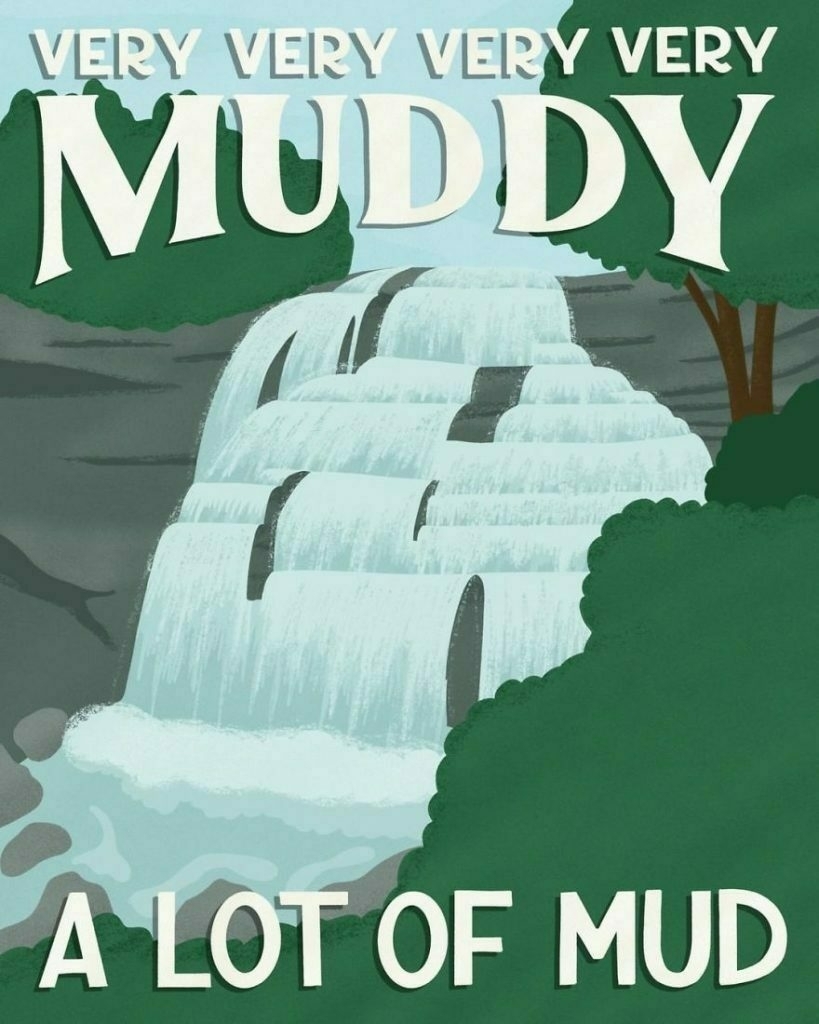
I Illustrated National Parks In America Based On Their Worst Review And I Hope They Will Make You Laugh (16 Pics)
I'm an illustrator and I have always had a personal goal to draw all 62 US National Parks, but I wanted to find a unique twist for the project. When I found that there are one-star reviews for every single park, the idea for Subpar Parks was born. For each park, I hand-letter a line from the one-star reviews alongside my illustration of each park as my way of putting a fun and beautiful twist on the negativity.
Amber Share (Bored Panda)
I love this, especially as the illustrations are so beautiful and the comments so banal.
What Does a Screen Do?
We know, for instance, that smartphone use is associated with depression in teens. Smartphone use certainly could be the culprit, but it’s also possible the story is more complicated; perhaps the causal relationship works the other way around, and depression drives teenagers to spend more time on their devices. Or, perhaps other details about their life—say, their family background or level of physical activity—affect both their mental health and their screen time. In short: Human behavior is messy, and measuring that behavior is even messier.
Jane C. Hu (Slate)
This, via Ian O'Byrne, is a useful read for anyone who deals with kids, especially teenagers.
13 reads to save for later: An open organization roundup
For months, writers have been showering us with multiple, ongoing series of articles, all focused on different dimensions of open organizational theory and practice. That's led to to a real embarrassment of riches—so many great pieces, so little time to catch them all.
So let's take moment to reflect. If you missed one (or several) now's your chance to catch up.
Bryan Behrenshausen (Opensource.com)
I've already shared some of the articles in this roundup, but I encourage you to check out the rest, and subscribe to opensource.com. It's a great source of information and guidance.
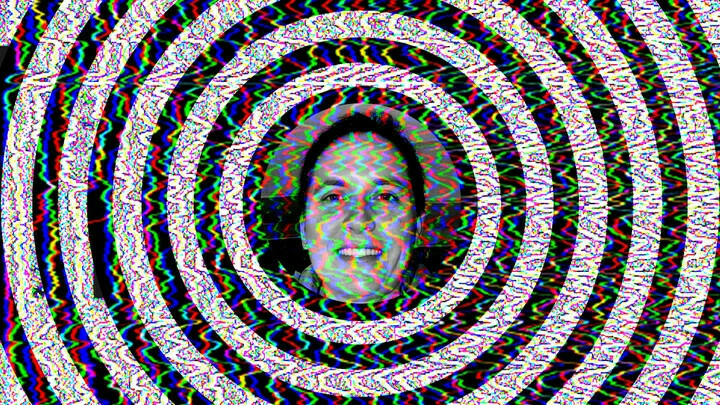
It Doesn’t Matter If Anyone Exists or Not
Capitalism has always transformed people into latent resources, whether as labor to exploit for making products or as consumers to devour those products. But now, online services make ordinary people enact both roles: Twitter or Instagram followers for conversion into scrap income for an influencer side hustle; Facebook likes transformed into News Feed-delivery refinements; Tinder swipes that avoid the nuisance of the casual encounters that previously fueled urban delight. Every profile pic becomes a passerby—no need for an encounter, even.
Ian Bogost (The Atlantic)
An amazing piece of writing, in which Ian Bogost not only surveys previous experiences with 'strangers' but applies it to the internet. As he points out, there is a huge convenience factor in not knowing who made your sandwich. I've pointed out before that capitalism is all about scale, and at the end of the day, caring doesn't scale, and scaling doesn't care.
You don't want quality time, you want garbage time
We desire quality moments and to make quality memories. It's tempting to think that we can create quality time just by designating it so, such as via a vacation. That generally ends up backfiring due to our raised expectations being let down by reality. If we expect that our vacation is going to be perfect, any single mistake ruins the experience
In contrast, you are likely to get a positive surprise when you have low expectations, which is likely the case during a "normal day". It’s hard to match perfection, and easy to beat normal. Because of this, it's more likely quality moments come out of chance
If you can't engineer quality time, and it's more a matter of random events, it follows that you want to increase how often such events happen. You can't increase the probability, but you can increase the duration for such events to occur. Put another way, you want to increase quantity of time, and not engineer quality time.
Leon Lin (Avoid boring people)
There's a lot of other interesting-but-irrelevant things in this newsletter, so scroll to the bottom for the juicy bit. I've quoted the most pertinent point, which I definitely agree with. There's wisdom in Gramsci's quotation about having "pessimism of the intellect, optimism of the will".
The Prodigal Techbro
The prodigal tech bro doesn’t want structural change. He is reassurance, not revolution. He’s invested in the status quo, if we can only restore the founders’ purity of intent. Sure, we got some things wrong, he says, but that’s because we were over-optimistic / moved too fast / have a growth mindset. Just put the engineers back in charge / refocus on the original mission / get marketing out of the c-suite. Government “needs to step up”, but just enough to level the playing field / tweak the incentives. Because the prodigal techbro is a moderate, centrist, regular guy. Dammit, he’s a Democrat. Those others who said years ago what he’s telling you right now? They’re troublemakers, disgruntled outsiders obsessed with scandal and grievance. He gets why you ignored them. Hey, he did, too. He knows you want to fix this stuff. But it’s complicated. It needs nuance. He knows you’ll listen to him. Dude, he’s just like you…
Maria Farrell (The Conversationalist)
Now that we're experiencing something of a 'techlash' it's unsurprising that those who created surveillance capitalism have had a 'road to Damascus' experience. That doesn't mean, as Maria Farrell points out, that we should all of a sudden consider them to be moral authorities.
Enjoy this? Sign up for the weekly roundup, become a supporter, or download Thought Shrapnel Vol.1: Personal Productivity!
Microcast #085 — Extensions for Mozilla Firefox
In the last quarter of 2019, I got rid of my Google Pixelbook and Chromebox, and switched full-time to Linux and Firefox.
I still need to dip into Chromium occasionally to use Loom but, on the whole, I'm really happy with my new setup. In this microcast, I go through my Firefox extensions and the reasons I have them installed.
Show notes
The following are links to the Firefox Add-ons directory:
We don’t receive wisdom; we must discover it for ourselves after a journey that no one can take us on or spare us
So said Marcel Proust, that famous connoisseur of les petites madeleines. While I don't share his effete view of the world, I do like French cakes and definitely agree with his sentiments on wisdom.
Earlier this week, Eylan Ezekiel shared this Nesta Landscape of innovation approaches with our Slack channel. It's what I would call 'slidebait' — carefully crafted to fit onto slide decks in keynotes around the world. It's a smart move because it gets people talking about your organisation.
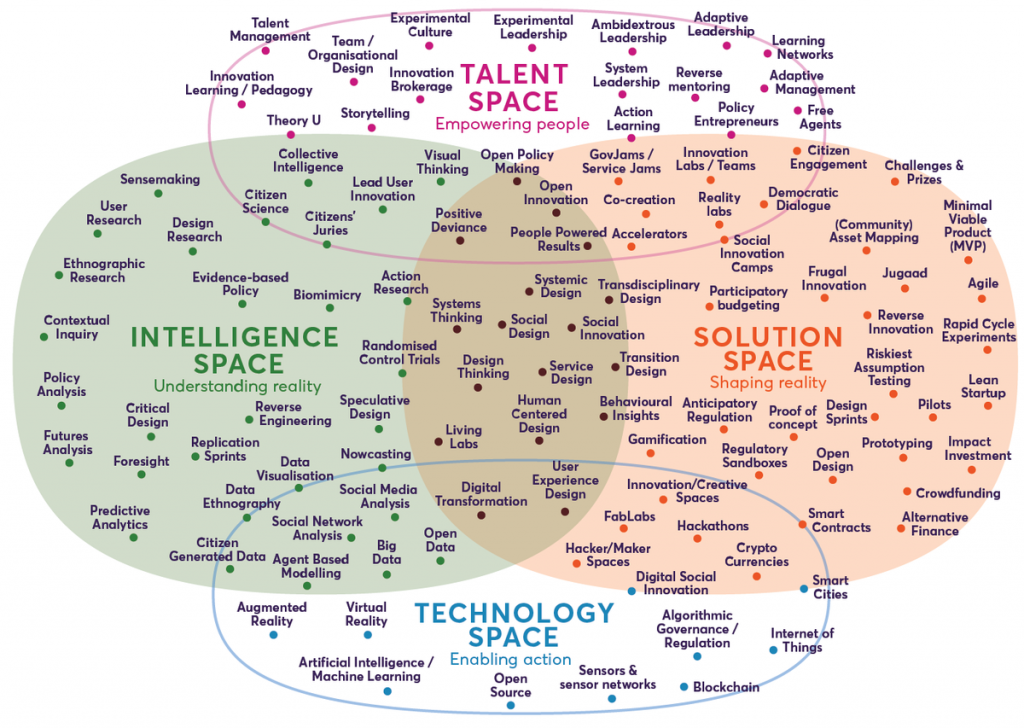
In my opinion, how these things are made is more interesting than the end result. There are inevitably value judgements when creating anything like this, and, because Nesta have set it out as overlapping 'spaces', the most obvious takeaway from the above diagram is that those innovation approaches sitting within three overlapping spaces are the 'most valuable' or 'most impactful'. Is that true?
A previous post on this topic from the Nesta blog explains:
Although this map is neither exhaustive nor definitive – and at some points it may seem perhaps a little arbitrary, personal choice and preference – we have tried to provide an overview of both commonly used and emerging innovation approaches.
Bas Leurs (formerly of nesta)
When you're working for a well-respected organisation, you have to be really careful, because people can take what you produce as some sort of Gospel Truth. No matter how many caveats you add, people confuse the map with the territory.
I have some experience with creating a 'map' for a given area, as I was Mozilla's Web Literacy Lead from 2013 to 2015. During that time, I worked with the community to take the Web Literacy Standard Map from v0.1 to v1.5.
Digital literacies of various types are something I've been paying attention to for around 15 years now. And, let me tell, you, I've seen some pretty bad 'maps' and 'frameworks'.
For example, here's a slide deck for a presentation I did for a European Commission Summer School last year, in which I attempted to take the audience on a journey to decide whether a particular example I showed them was any good:
If you have a look at Slide 14 onwards, you'll see that the point I was trying to make is that you have no way of knowing whether or not a shiny, good-looking map is any good. The organisation who produced it didn't 'show their work', so you have zero insight into its creation and the decisions taken in its creation. Did their intern knock it up on a short deadline? We'll never know.
The problem with many think tanks and 'innovation' organisations is that they move on too quickly to the next thing. Instead of sitting with something and let it mature and flourish, as soon as the next bit of funding comes in, they're off like a dog chasing a shiny car. I'm not sure that's how innovation works.
Before Mozilla, I worked at Jisc, which at the time funded innovation programmes on behalf of the UK government and disseminated the outcomes. I remember a very simple overview from Jisc's Sustaining and Embedding Innovations project that focused on three stages of innovation:
Invention
This is about the generation of new ideas e.g. new ways of teaching and learning or new ICT solutions.Early Innovation
This is all about the early practical application of new inventions, often focused in specific areas e.g. a subject discipline or speciality such as distance learning or work-based learning.Systemic Innovation
Jisc
This is where an institution, for example, will aim to embed an innovation institutionally.
The problem with many maps and frameworks, especially around digital skills and innovation, is that they remove any room for ambiguity. So, in an attempt not to come across as vague, they instead become 'dead metaphors'.
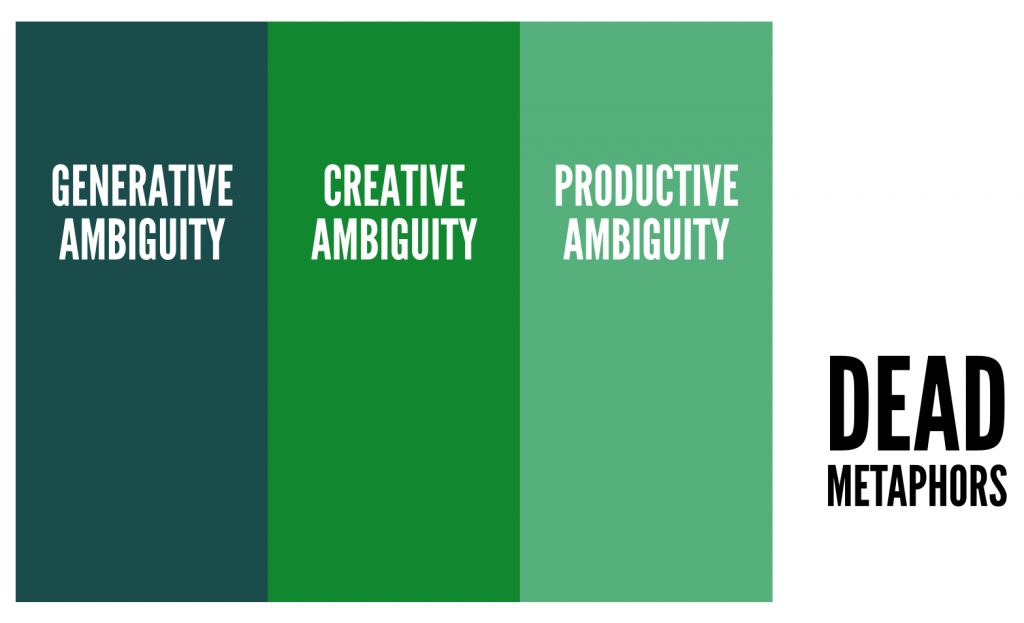
I don't think I've ever seen an example where, without any contextualisation, an individual or organisation has taken something 'off the shelf' and applied it to achieve uniformly fantastic results. That's not how these things work.
Humans are complex organisms; we're not machines. For a given input you can't expect the same output. We're not lossless replicators.

So although it takes time, effort, and resources, you've got to put in the hard yards to see an innovation through all three of those stages outlined by Jisc. Although the temptation is to nail things down initially, the opposite is actually the best way forward. Take people on a journey and get them to invest in what's at stake. Embrace the ambiguity.
I've written more about this in a post I wrote about a 5-step process for creating a sustainable digital literacies curriculum. It's something I'll be thinking about more as I reboot my consultancy work (through our co-op) for 2020!
For now, though, remember this wonderful African proverb:
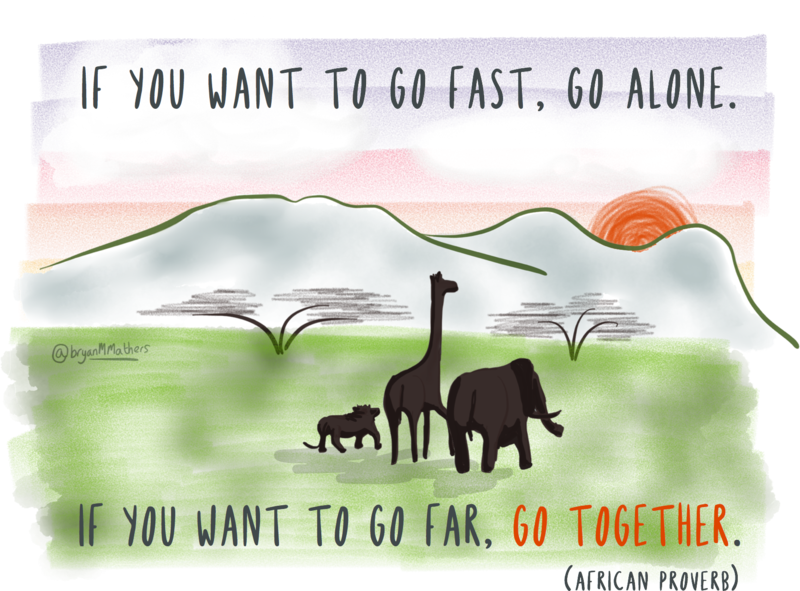
There’s no perfection where there’s no selection
So said Baltasar Gracián. One of the reasons that e-portfolios never really took off was because there's so much to read. Can you imagine sifting through hundreds of job applications where each applicant had a fully-fledged e-portfolio, including video content?
That's why I've been so interested in Open Badges, and have written plenty on the subject over the last eight years. If you're new to the party, there are various terms such as 'microcredentials', 'digital badges', and 'digital credentials'. The difference is in the standard which was previously stewarded by Mozilla (including at my time there) and now by IMS Global Learning Consortium.
When I left Mozilla, I did a lot of work with City & Guilds, an awarding body that's well known for its vocational qualifications. They took a particular interest in Open Badges, for obvious reasons. In this article for FE News, Kirstie Donnelly (Managing Director of the City & Guilds Group) explains their huge potential:
The fact that you can actually stack these credentials, and they become portable, then you can publish them through online, through your LinkedIn. I just think it puts a very different dynamic into how the learner owns their experience, but at the same time the employers and the education system can still influence very much how those credentials are built and stacked.
Kirstie Donnelly
Like it or not, a lot of education is 'signalling' — i.e. providing an indicator that you can do a thing. The great thing about Open Badges is that you can make credentials much more granular and, crucially, include evidence of your ability to do the thing you claim to be able to do.
As Tyler Cowen picks up on for Marginal Revolution, without this granularity, there's a knock-on effect upon societal inequality. Privilege is perpetuated. He quotes a working paper by Gaurab Aryal, Manudeep Bhuller, and Fabian Lange who state:
The social and the private returns to education differ when education can increase productivity and also be used to signal productivity. We show how instrumental variables can be used to separately identify and estimate the social and private returns to education within the employer learning framework of Farber and Gibbons (1996) and Altonji and Pierret (2001). What an instrumental variable identifies depends crucially on whether the instrument is hidden from or observed by the employers. If the instrument is hidden, it identifies the private returns to education, but if the instrument is observed by employers, it identifies the social returns to education.
Aryal, Bhuller, and Lange
I take this to mean that, in a marketplace, the more the 'buyers' (i.e. employers) understand what's on offer, the more this changes the way that 'sellers' (i.e. potential employees) position themselves. Open Badges and other technologies can help with this.
Understandably, a lot is made of digital credentials for recruitment. Indeed, I've often argued that badges are important at times of transition — whether into a job, on the job, or onto your next job. But they are also important for reasons other than employment.
Lauren Acree, writing for Digital Promise explains how they can be used to foster more inclusive classrooms:
The Learner Variability micro-credentials ask educators to better understand students as learners. The micro-credentials support teachers as they partner with students in creating learning environments that address learners’ needs, leverage their strengths, and empower students to reflect and adjust as needed. We found that micro-credentials are one important way we can ultimately build teacher capacity to meet the needs of all learners.
Lauren Acree
The article includes this image representing a taxonomy of how teachers use micro-credentials in their work:
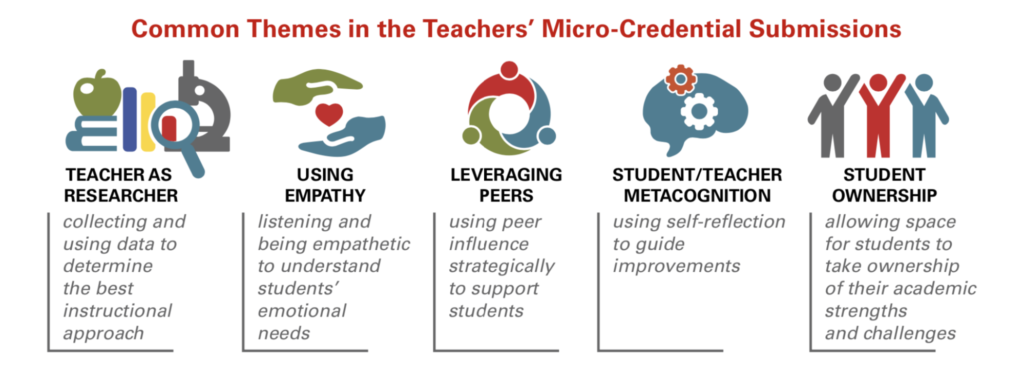
If we zoom out even further, we can see that micro-credentials as a form of 'currency' could play a big role in how we re-imagine society. Tim Riches, who I collaborated with while at both Mozilla and City & Guilds, has written a piece for the RSA about the 'Cities of Learning' projects that he's been involved in. All of these have used badges in some form or other.
In formal education, the value of learning is measured in qualifications. However, qualifications only capture a snapshot of what we know, not what we can do. What’s more, they tend to measure routine skills - the ones most vulnerable to automation and outsourcing.
[...]
Cities are full of people with unrecognised talents and potential. Cities are a huge untapped resource. Skills are developed every day in the community, at work and online, but they are hidden from view - disconnected from formal education and employers.
Tim Riches
I don't live in a city, and don't necessarily see them as the organising force here, but I do think that, on a societal level, there's something about recognising potential. Tim includes a graphic in his article which, I think, captures this nicely:
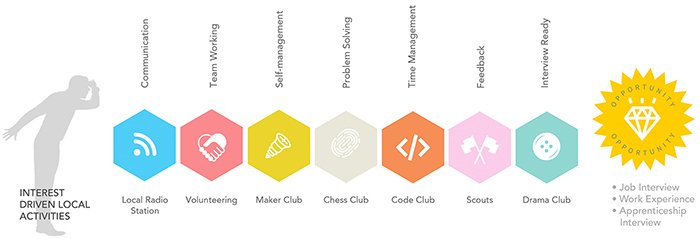
There's a phrase that's often used by feminist writers: "you can't be what you can't see". In other words, if you don't have any role models in a particular area, you're unlikely to think of exploring it. Similarly, if you don't know anyone who's a lawyer, or a sailor, or a horse rider, it's not perhaps something you'd think of doing.
If we can wrest control of innovations such as Open Badges away from the incumbents, and focus on human flourishing, I can see real opportunities for what Serge Ravet and others call 'open recognition'. Otherwise, we're just co-opting them to prop up and perpetuate the existing, unequal system.
Also check out:
The smallest deed is better than the greatest intention
Thanks to John Burroughs for today's title. For me, it's an oblique reference to some of the situations I find myself in, both in my professional and personal life. After all, words are cheap and actions are difficult.
I'm going to take the unusual step of quoting someone who's quoting me. In this case, it's Stephen Downes picking up on a comment I made in the cc-openedu Google Group. I'd link directly to my comments, but for some reason a group about open education is... closed?
I'd like to echo a point David Kernohan made when I worked with him on the Jisc OER programme. He said: "OER is a supply-side term". Let's face it, there are very few educators specifically going out and looking for "Openly Licensed Resources". What they actuallywant are resources that they can access for free (or at a low cost) and that they can legally use. We've invented OER as a term to describe that, but it may actually be unhelpfully ambiguous.
Shortly after posting that, I read this post from Sarah Lambert on the GO-GN (Global OER Graduate Network) blog. She says:
[W]hile we’re being all inclusive and expanding our “open” to encompass any collaborative digital practice, then our “open” seems to be getting less and less distinctive. To the point where it’s getting quite easily absorbed by the mainstream higher education digital learning (eLearning, Technology Enhanced Learning, ODL, call it what you will). Is it a win for higher education to absorb and assimilate “open” (and our gift labour) as the latest innovation feeding the hungry marketised university that Kate Bowles spoke so eloquently about? Is it a problem if not only the practice, but the research field of open education becomes inseparable with mainstream higher education digital learning research?
My gloss on this is that 'open education' may finally have moved into the area of productive ambiguity. I talked about this back in 2016 in a post on a blog I post to only very infrequently, so I might as well quote myself again:
Ideally, I’d like to see ‘open education’ move into the realm of what I term productive ambiguity. That is to say, we can do some workwith the idea and start growing the movement beyond small pockets here and there. I’m greatly inspired by Douglas Rushkoff’s new Team Human podcast at the moment, feeling that it’s justified the stance that I and others have taken for using technology to make us more human (e.g. setting up a co-operative) and against the reverse (e.g. blockchain).
That's going to make a lot of people uncomfortable, and hopefully uncomfortable enough to start exploring new, even better areas. 'Open Education' now belongs, for better or for worse, to the majority. Whether that's 'Early majority' or 'Late majority' on the innovation adoption lifecycle curve probably depends where in the world you live.
Things change and things move on. The reason I used that xkcd cartoon about IRC at the top of this post is because there has been much (OK, some) talk about Mozilla ending its use of IRC.
While we still use it heavily, IRC is an ongoing source of abuse and harassment for many of our colleagues and getting connected to this now-obscure forum is an unnecessary technical barrier for anyone finding their way to Mozilla via the web. Available interfaces really haven’t kept up with modern expectations, spambots and harassment are endemic to the platform, and in light of that it’s no coincidence that people trying to get in touch with us from inside schools, colleges or corporate networks are finding that often as not IRC traffic isn’t allowed past institutional firewalls at all.
Cue much hand-wringing from the die-hards in the Mozilla community. Unfortunately, Slack, which originally had a bridge/gateway for IRC has pulled up the drawbridge on that front, so they could go with something like Mattermost, but given recently history I bet they go with Discord (or similar).
As Seth Godin points out in his most recent podcast episode, everyone wants be described as 'supple', nobody wants to be described as 'brittle'. Yet, the actions we take suggest otherwise. We expect that just because the change we see in the world isn't convenient, that we can somehow slow it down. Nope, you just have to roll with it, whether that's changing technologies, or different approaches to organising ideas and people.
Also check out:
A little Friday randomness
Not everything I read and bookmark to come back to is serious. So here for the sake of a little levity, are some things I've discovered recently that either made me smile, or think "that's cool":
Header image: xkcd
Open source is as much about culture as it is about code
The talented Abby Cabunoc Mayes, who I worked with when I was at the Mozilla Foundation (and who I caught up with briefly at MozFest), was interviewed recently by TechRepublic. I like the way she frames the Open Source movement:
I like to think the movement really came together with The Cathedral and the Bazaar, an essay by Eric Raymond. And he compared the two ideas. There's the cathedral, or free software, where a small group of people are putting together a big cathedral that anyone can come to, and attend a service or whatever. He compared that to a bazaar, where everyone is co-creating. There's no real structure, you can set up a table wherever you want. You can haggle with other people. So open source, he really compared that to the Linux foundation at the time, where he was seeing so much delegation, so many people taking on tasks that would have been closed, in the cathedral model. So that idea that anyone can get involved, and anyone can participate, is really that key. Rather than just giving away something for free.If you do an image search for Eric Raymond, you'll find some of him holding guns, as he's an enthusiast. I don't like guns, nor do many people, but I'd like to think we can separate someone's ideas about organising from their thoughts in a different area. I know some would beg to differ.
The interviewer goes on to ask Abby what the advantages of working openly are:
There's a lot more buy-in from people. And having this distributed model, where anyone can take a part of this, and anyone can be involved in running the project, really helps keep the power not centralized, but really distributed. And so, you can see what's happening to your data. So there's a lot of advantages that way, and a lot more trust with the population. And I think this is where innovation happens. When everyone can be a part of something, and where everyone can submit the best ideas. And I think we saw that in the scientific revolution, when the academic journals started. And people were publishing their research, and then letting other people use that and build upon that and discover more things. We saw the same thing happen with open source. Where you can really take this and use and do whatever you want with it.I think it's important to keep linking and talking about this kind of stuff. Unfortunately, I feel like our cultural default is to try and take all the credit and work in silos.
Source: TechRepublic
The end of 'meritocracy' at Mozilla
A couple of years ago, I wrote a post explaining how appeals to ‘meritocracy’ are problematic, particularly in education. The world is not a neutral place and meritocracy can actually entrench privilege.
I’m glad to see, therefore, that Mozilla have decided to stop using the term:
“Meritocracy” was widely adopted as a best practice among open source projects in the founding days of the movement: it appeared to speak to collaboration amongst peers and across organizational boundaries. 20 years later, we understand that this concept was practiced in a world characterized by both hidden bias and outright abuse. The notion of “meritocracy” can often obscure bias and can help perpetuate a dominant culture. Meritocracy does not consider the reality that tech does not operate on a level playing field.Source: Mozilla Stands for Inclusion
The end of 'meritocracy' at Mozilla
A couple of years ago, I wrote a post explaining how appeals to ‘meritocracy’ are problematic, particularly in education. The world is not a neutral place and meritocracy can actually entrench privilege.
I’m glad to see, therefore, that Mozilla have decided to stop using the term:
“Meritocracy” was widely adopted as a best practice among open source projects in the founding days of the movement: it appeared to speak to collaboration amongst peers and across organizational boundaries. 20 years later, we understand that this concept was practiced in a world characterized by both hidden bias and outright abuse. The notion of “meritocracy” can often obscure bias and can help perpetuate a dominant culture. Meritocracy does not consider the reality that tech does not operate on a level playing field.Source: Mozilla Stands for Inclusion
Mozilla's Web Literacy Curriculum
I’m not sure what to say about this announcement from Mozilla about their ‘new’ Web Literacy Curriculum. I led this work from 2012 to 2015 at the Mozilla Foundation, but it doesn’t seem to be any further forward now than when I left.
In fact, it seems to have just been re-focused for the libraries sector:
The site for the Web Literacy Curriculum features resources that will already be familiar to those who follow Mozilla's work.With support from Institute of Museum and Library Services, and a host of collaborators including key public library leaders from around the country, this open-source, participatory, and hands-on curriculum was designed to help the everyday person in a library setting, formal and informal education settings, community center, or at your kitchen table.
Four years ago, I wrote a post on the Mozilla Learning blog about Atul Varma’s WebLitMapper, Laura Hilliger’s Web Literacy Learning Pathways, as well as the draft alignment guidelines I’d drawn up. Where has the innovation gone since that point?
It’s sad to see such a small, undeveloped resource from an organisation that once showed such potential in teaching the world the Web.
Source: Read, Write, Participate
Mozilla's Web Literacy Curriculum
I’m not sure what to say about this announcement from Mozilla about their ‘new’ Web Literacy Curriculum. I led this work from 2012 to 2015 at the Mozilla Foundation, but it doesn’t seem to be any further forward now than when I left.
In fact, it seems to have just been re-focused for the libraries sector:
The site for the Web Literacy Curriculum features resources that will already be familiar to those who follow Mozilla's work.With support from Institute of Museum and Library Services, and a host of collaborators including key public library leaders from around the country, this open-source, participatory, and hands-on curriculum was designed to help the everyday person in a library setting, formal and informal education settings, community center, or at your kitchen table.
Four years ago, I wrote a post on the Mozilla Learning blog about Atul Varma’s WebLitMapper, Laura Hilliger’s Web Literacy Learning Pathways, as well as the draft alignment guidelines I’d drawn up. Where has the innovation gone since that point?
It’s sad to see such a small, undeveloped resource from an organisation that once showed such potential in teaching the world the Web.
Source: Read, Write, Participate
Every part of your digital life is being tracked, packaged up, and sold
I’ve just installed Lumen Privacy Monitor on my Android smartphone after reading this blog post from Mozilla:
The link to the full report is linked to in the quotation above, but the high-level findings were:New research co-authored by Mozilla Fellow Rishab Nithyanand explores just this: The opaque realm of third-party trackers and what they know about us. The research is titled “Apps, Trackers, Privacy, and Regulators: A Global Study of the Mobile Tracking Ecosystem,” and is authored by researchers at Stony Brook University, Data & Society, IMDEA Networks, ICSI, Princeton University, Corelight, and the University of Massachusetts Amherst.
[...]In all, the team identified 2,121 trackers — 233 of which were previously unknown to popular advertising and tracking blacklists. These trackers collected personal data like Android IDs, phone numbers, device fingerprints, and MAC addresses.
We're finally getting the stage where a large portion of the population can't really ignore the fact that they're using free services in return for pervasive and always-on surveillance.»Most trackers are owned by just a few parent organizations. The authors report that sixteen of the 20 most pervasive trackers are owned by Alphabet. Other parent organizations include Facebook and Verizon. “There is a clear oligopoly happening in the ecosystem,” Nithyanand says.
» Mobile games and educational apps are the two categories with the highest number of trackers. Users of news and entertainment apps are also exposed to a wide range of trackers. In a separate paper co-authored by Vallina-Rodriguez, he explores the intersection of mobile tracking and apps for youngsters: “Is Our Children’s Apps Learning?”
» Cross-device tracking is widespread. The vast majority of mobile trackers are also active on the desktop web, allowing companies to link together personal data produced in both ecosystems. “Cross-platform tracking is already happening everywhere,” Nithyanand says. “Fifteen of the top 20 organizations active in the mobile advertising space also have a presence in the web advertising space.”
Survival in the age of surveillance
The Guardian has a list of 18 tips to ‘survive’ (i.e. be safe) in an age where everyone wants to know everything about you — so that they can package up your data and sell it to the highest bidder.
On the internet, the adage goes, nobody knows you’re a dog. That joke is only 15 years old, but seems as if it is from an entirely different era. Once upon a time the internet was associated with anonymity; today it is synonymous with surveillance. Not only do modern technology companies know full well you’re not a dog (not even an extremely precocious poodle), they know whether you own a dog and what sort of dog it is. And, based on your preferred category of canine, they can go a long way to inferring – and influencing – your political views.Mozilla has pointed out in a recent blog post that the containers feature in Firefox can increase your privacy and prevent 'leakage' between tabs as you navigate the web. But there's more to privacy and security than just that.
Here’s the Guardian’s list:
A bit of a random list in places, but useful all the same.
Source: The Guardian
Firefox OS lives on in The Matrix
I still have a couple of Firefox OS phones from my time at Mozilla. The idea was brilliant: using the web as the platform for smartphones. The execution, in terms of the partnership and messaging to the market… not so great.
Last weekend, I actually booted up a device as my daughter was asking about ‘that orange phone you used to let me play with sometimes’. I noticed that Mozilla are discontinuing the app marketplace next month.
All is not lost, however, as open source projects can never truly die. This article reports on a ‘fork’ of Firefox OS being used to resurrect one of my favourite-ever phones, which was used in the film The Matrix:
Quietly, a company called KaiOS, built on a fork of Firefox OS, launched a new version of the OS built specifically for feature phones, and today at MWC in Barcelona the company announced a new wave of milestones around the effort that includes access to apps from Facebook, Twitter and Google in the form of its Voice Assistant, Google Maps, and Google Search; as well as a list of handset makers who will be using the OS in their phones, including HMD/Nokia (which announced its 8110 yesterday), Bullitt, Doro and Micromax; and Qualcomm and Spreadtrum for processing on the inside.I think I'm going to have to buy the new version of the Nokia 8110 just... because.
Source: TechCrunch
Audio Adversarial speech-to-text
I don’t usually go in for detailed technical papers on stuff that’s not directly relevant to what I’m working on, but I made an exception for this. Here’s the abstract:
We construct targeted audio adversarial examples on automatic speech recognition. Given any audio waveform, we can produce another that is over 99.9% similar, but transcribes as any phrase we choose (at a rate of up to 50 characters per second). We apply our white-box iterative optimization-based attack to Mozilla’s implementation DeepSpeech end-to-end, and show it has a 100% success rate. The feasibility of this attack introduce a new domain to study adversarial examples.In other words, the researchers managed to fool a neural network devoted to speech recognition into transcribing a phrase different to that which was uttered.
So how does it work?
By starting with an arbitrary waveform instead of speech (such as music), we can embed speech into audio that should not be recognized as speech; and by choosing silence as the target, we can hide audio from a speech-to-text systemThe authors state that merely changing words so that something different occurs is a standard adverserial attack. But a targeted adverserial attack is different:
Not only are we able to construct adversarial examples converting a person saying one phrase to that of them saying a different phrase, we are also able to begin with arbitrary non-speech audio sample and make that recognize as any target phrase.This kind of stuff is possible due to open source projects, in particular Mozilla Common Voice. Great stuff.
Source: Arxiv
Augmented and Virtual Reality on the web
There were a couple of exciting announcments last week about web technologies being used for Augmented Reality (AR) and Virtual Reality (VR). Using standard technologies that can be used across a range of devices is a game-changer.
First off, Google announced ‘Article’ which provides an straightforward way to add virtual objects to physical spaces.
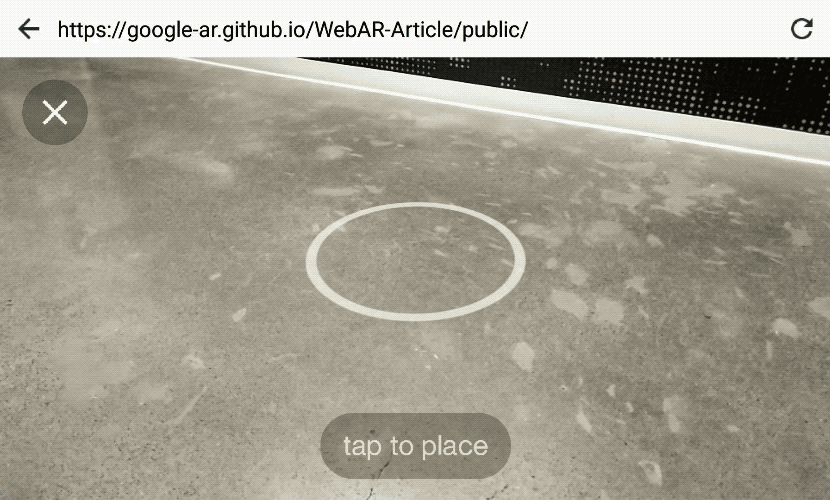
Mozilla, meanwhile directed attention towards A-Frame, which they’ve been supporting for a while. This allows VR experiences to be created using web technologies, including networking users together in-world.
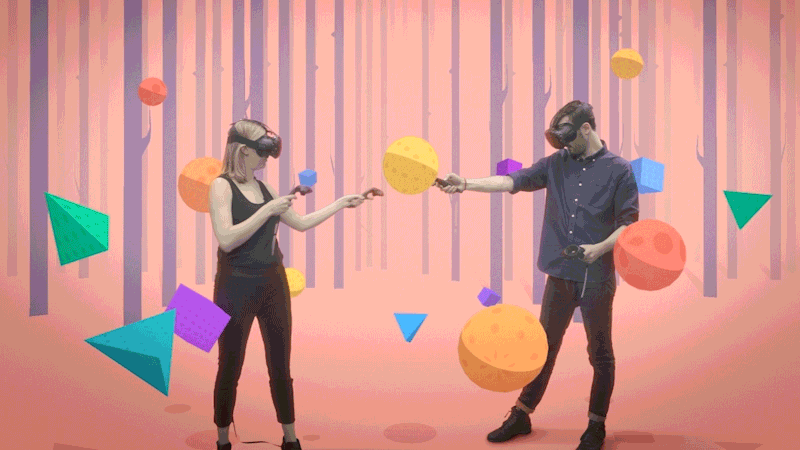
Although each have their uses, I think AR is going to be a much bigger deal than Virtual Reality (VR) for most people, mainly because it adds to an experience we’re used to (i.e. the world around us) rather than replacing it.
Sources: Google blog / A-Frame
Mozilla is creating an Open Leadership Map
The Mozilla Foundation may have shut down pretty much all of its learning programmes, but it’s still doing interesting stuff around Open Leadership. Chad Sansing writes:
We think of Open Leadership as a set of principles, practices, and skills people can use to mobilize their communities to solve shared problems and achieve shared goals. For example, Mozilla’s web browser, Firefox, was developed with an open code base with community contribution and support.They're using the Web Literacy Map (work I led during my time with Mozilla) as a reference point. It's early days, but here's what they've got so far:
 There’s also a white paper which they say will be updated in February 2018. I’m looking forward to seeing where this goes. Along with great work being done at opensource.com’s community around The Open Organization it’s a great time to be a open leader!
There’s also a white paper which they say will be updated in February 2018. I’m looking forward to seeing where this goes. Along with great work being done at opensource.com’s community around The Open Organization it’s a great time to be a open leader!
Source: Read, Write, Participate
